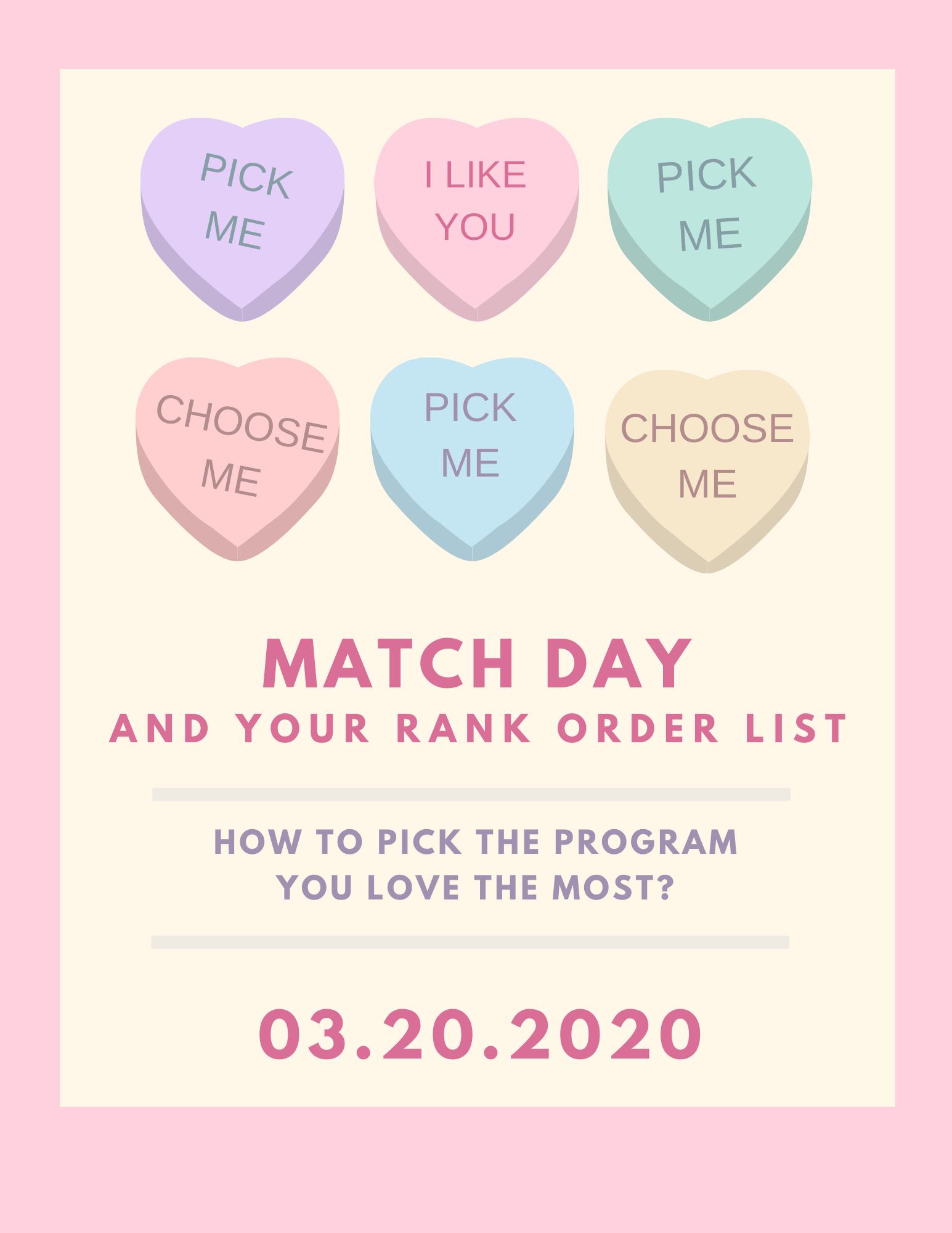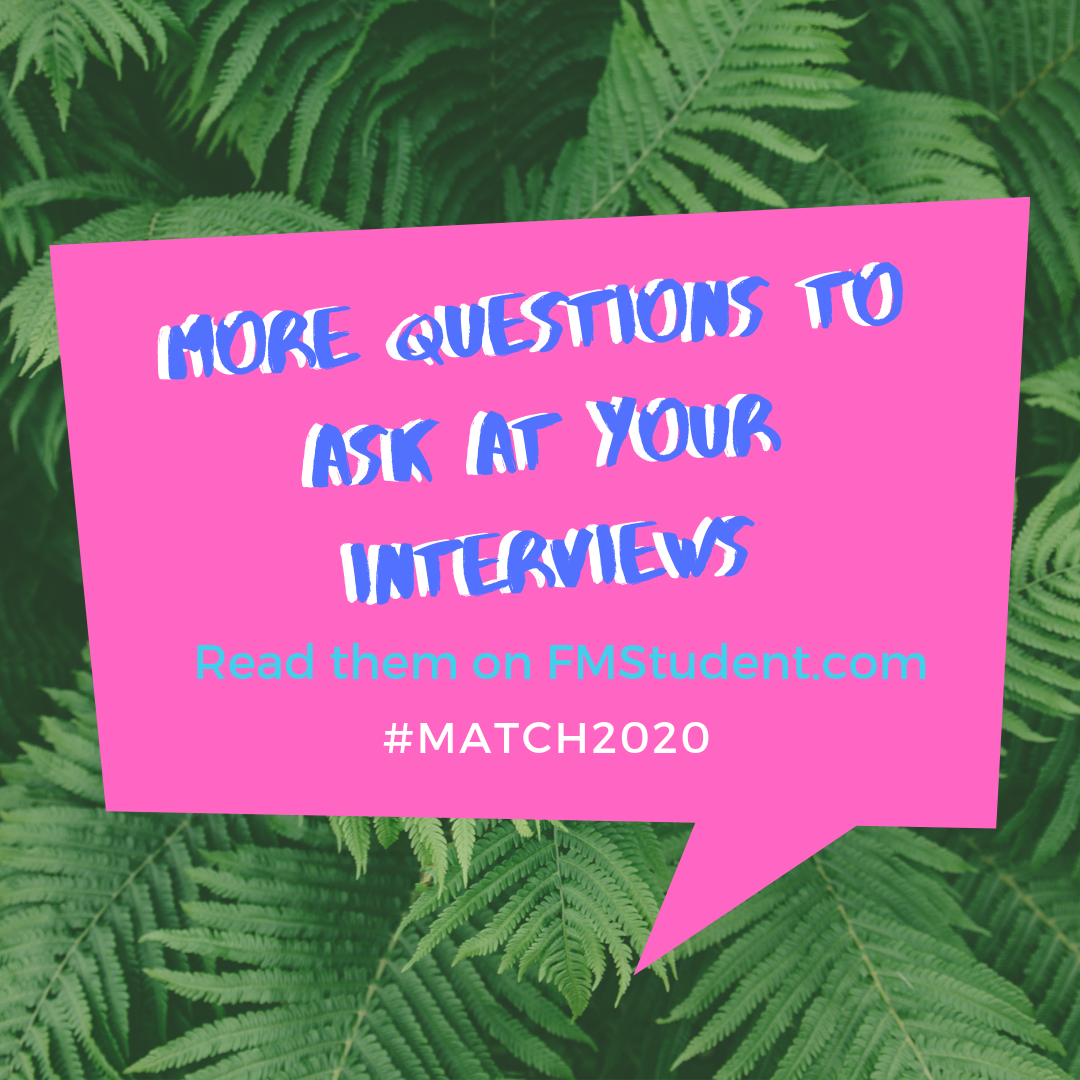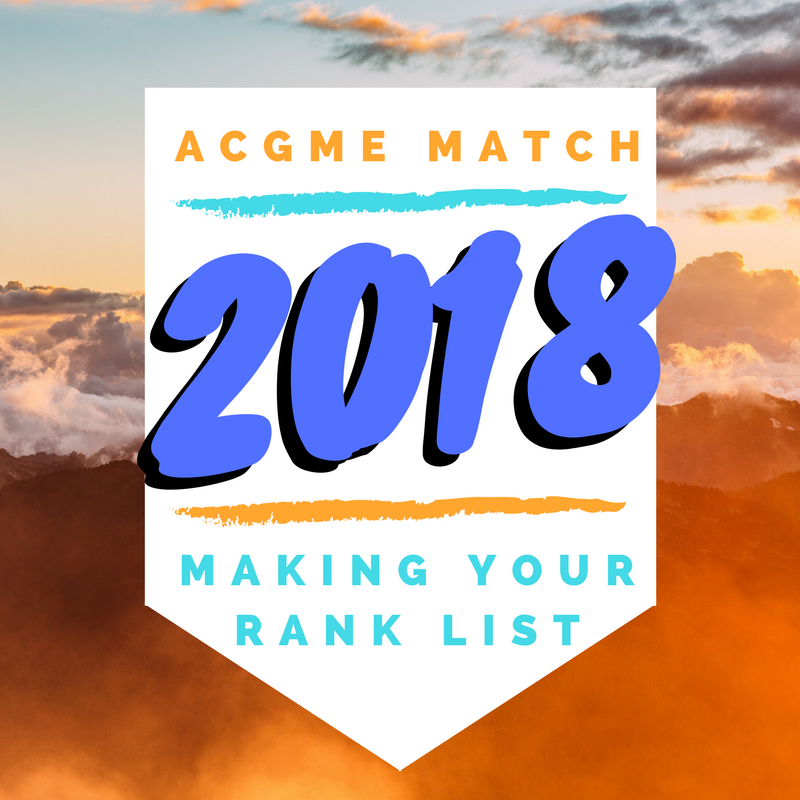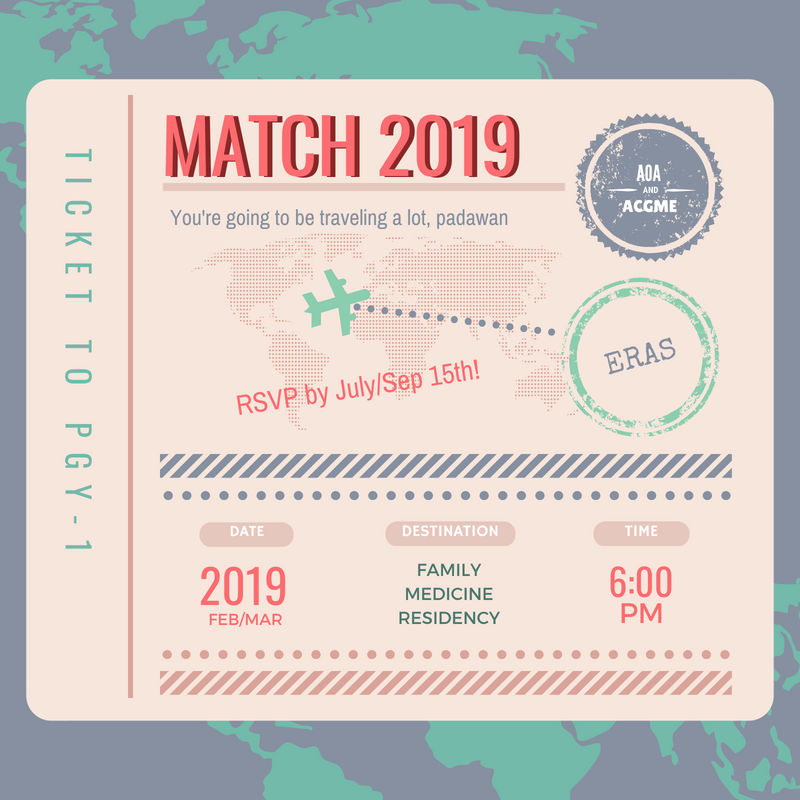Making your Rank Order List (ROL) for Match 2020
In less than a month the Rank Order List Certification Deadline will happen. Interviews have occurred, emails exchanged, charts of pros/cons drawn up. Programs are looking over lists of applicants and notes from residents, admin and faculty. Many have already decided on how they will rank their applicants. And you, the medical student applying to these programs, are trying to make a huge decision about where to spend the next few years of your life.

If interviewing is like speed dating, the Match is…
This will be the fourth time I’ve written a post about ROL’s. Every year it’s a little bit different, as my perspective changes. I finished residency in 2019, and have three years to look back on, so this will not be a short “top five” style post. This is going to be in-depth, take more than a minute to read and likely raise more questions than it will answer. If that’s not your jam scroll to the bottom and read my brief past posts via the links.
Five Considerations for ROLs
- Goals: Yours and Theirs
- Life: Location and Family
- Program: Support and Teaching
- Foundations: The 2AM “Test”, Finding Joy
- Fin: Trusting your Gut
Goals: Yours and Theirs
Residency is your chance to commit to family medicine and learn as much as you can. And while we learn a lot about many things, we can’t learn every thing. So if a program will support your goals, if it’s mission statement aligns with your passions, if the population they serve is who fuels your fire then rank them high. If you didn’t do the hard work of figuring out what your passions are before applying, now is the time.
Why? Because residency will be your time, to evolve into the type of physician you want to be, to dedicate yourself to what you love. I found myself refining my goals simply in choosing what programs to apply to, but now you can define your future plans further.
- Is there any chance to rotate with an addiction medicine specialist and learn about substance use disorder management and treatment from people who support patients with SUD, encourage harm reduction and offer training for DEA-X licensing? Do they provide residents with Narcan kits?
- If you’re interested in fellowship is the program going to support you in that (hint: it depends on their goals for for graduated residents). Have past residents gone on to fellowships, and if yes which ones? Will you be able to find a research mentor with an interest in that fellowship topic? Conversely, if you absolutely do NOT want to do fellowship, but the program pushes all residents to try for one, then it’s not right for you.
- If you want to learn to perform abortions do they have electives setup? Are they open to arranging them? Or will all the work be on you? I had a Catholic-hospital based program tell me they’d never had anyone with an interest apply, and the PD was honest and open, offering to work with me to arrange “something” – but I had done enough of my own arranging in medical school and wanted a residency with a proven abortion training track record.
- If you’re planning to be a rural provider can you do an elective in that? Is the program part of the RTT Collaborative or in a rural location? Is it part of an FQHC? Is it a split program that has you in a university setting for one year, with the next in a rural town (requiring a move)? Or is it an academic center that has rural rotations, and if they do are they throughout residency or predominantly in one year of training?
- Passionate about global medicine? Does the program allow two months concurrent out of a country, or only one at a time? Does it count as elective time? Are there any required electives or extra-curriculars to participate in? What locations do they have existing relationships with? Do you have to setup your own rotation? For comparison, my residency has a global health interest group for interns, who can then apply to be in the program as a senior. If you are approved you use a PGY2 elective for global health training at the university, and in PGY3 you can do either one or two months in another country (and they can be concurrent). The leaders of this program also teach about the risks of global health tourism and avoiding it, encourage you to do global health-focused research and present at a global health conference as a PGY3. A few years ago one resident went to another country to help setup a family medicine residency.
If you don’t know the answers to these questions go back through any notes you scrawled at your interview, review the USB drive they gave you and check the residency website. No answer? Go ahead and email a resident and a faculty member your questions – hitting up two people gives you two perspectives, and at this time of year responses will be slower. They’re getting this from a lot of other applicants.
Life: Location and Family
During medical school I was a 7-13 hour flight away from everyone but my husband. I went home exactly twice, once for my brother’s wedding and once for a holiday. For residency I was determined to avoid that, so all but one program I ranked were on the West Coast. However, the program I interviewed with in my home city was very disappointing, so I chose to rank it last on my list. How much this matters to you will depend on your relationship with family and goals for the future.
I Matched in a university town two hours drive from my parents, which allowed me to visit during lighter rotations, and freed me from an expectation to visit on my one-day-off-a-week, which may or may not have developed if I was in the same city. It was great for my spirit. Nobody cooks like my parents, not even a good Persian restaurant, and visiting for a meal makes me feel loved. You’ll need to figure out what weight this has for you, and what weight it has in relation to the other elements of this list.
The other aspect of location is what is there to for you to do on days off? As an intern you’ll be spending a lot of time on inpatient services, with only one day off per week. That single day needs to be well spent, which for me often meant lying near comatose on my couch watching Netflix, while doing laundry. But on less intense rotations it also meant going to one of the absurd number of cafes or brunch places in Tucson with my awesome co-residents. Sometimes going to yoga classes. Getting to shop at the craft stores or Target, having a picnic with my husband in the park. Going to a zoo or a garden. So add that to your ranking system, too.
Program: Support and Teaching
Did you get to see the residents and faculty attendings interact? Were they hard to tell apart (ie: they all had good camaderie and were happy to see each other)? Did you see residents avoid or pull away from multiple attendings (red flag, red flag!)? And what did residents tell you about the support they receive? Do they feel they’re given an appropriate and safe amount of supervision on nights? Are attendings on call or in-house, or utterly absent? What about L&D service? Do residents have assigned attending mentors? Do they have research mentors? For my perspective, my assigned faculty mentor is still a dear, treasured mentor and friend. I respect her more than words can express, and she was instrumental in my growth as a physician.
As for teaching, who is involved in didactics? How is teaching time protected? What is the ratio of residents to attendings in clinic? I preferred the blocked style of my residency (four hours of teaching one afternoon a week, all residents excused from rotations to attend teaching, which was mandatory) versus a scheduled hour-per-day system other programs offered. We also had teaching on inpatient family medicine service – three mornings a week with 30 minutes of inpatient-focused teaching. This leads into your potential success on ABFM boards, as teaching is a blend of board prep and clinically-relevant education. I think my program did a good job balancing the two, but I have heavy bias (I was on the teaching committee most of residency).
Also, how does the program collect and act on feedback? My program filtered a lot of feedback through our Chief residents, but also had high resident involvement on committees for our rotations and curriculum, which led to a lot of change. Sometimes those changes were tough adjustments, but our program leadership made an effort to be transparent and improve the quality of our education.
Foundations
Residency can be a Thief of Joy. Intern year especially is difficult. You’re learning so much medicine in such a compressed period of time, and the people around you are the ones who will make a world of difference in the happiness you feel from day to day. Did the residents like each other? Did they spend time together outside of work? Because if not, run away. Even if you are an introvert you need the support of your fellow residents to survive. You are committing to a program for three years, so if the current interns and PGY2s seemed like a family, if there was support and love there, consider that high in your ranking.
My class was incredibly close during the three years of residency. Within our first few weeks it was as if I’d gotten six brothers and sisters, and we always checked in on each other. All three years of residency the different classes supported each other, inside and outside of work, with seniors acting as mentors for the interns. Our Chiefs were always available for those in need, but the rest of the residents stepped up, too. When people had medical or personal issues, or just got sick, we covered those shifts. And we wanted to see each other after work. I’ve gone to countless brunches, attended birthday parties, seen holiday winter lights and been fed at “orphan” Thanksgivings with my residency family. And post graduation? I’m going to a resident’s wedding later this year, and several residents and former residents are planning to drive out and visit me in SF over the next few months. These people are your foundation.
With this in mind the two AM test is a good metric. If you are stuck at two AM with these people, at your most sleepy, hungry and cranky, will they brighten your life or drag you down? Remember, don’t consider the other applicants or the PGY3’s who are graduating in a few months. Only consider the interns and PGY2’s you met at interview.
Trust Your Gut
In a prior ROL post I mentioned that there was a program I thought I should rank highly on the East Coast. It seemed like a good fit, it met a lot of my needs, but it just felt wrong. Trust your gut on this stuff. That program doesn’t exist anymore – they closed their family medicine program and all the residents had to choose between going to a new hospital or find a new residency.
As always… NEVER CHANGE YOUR Rank Order List THE NIGHT BEFORE DEADLINE. Do NOT let panic make decisions for you!
You may not Match to your “number one”, but most Family Medicine applicants Match to their top three. So use the above to guide you. You’re gonna do great. You’ve got this! Woo!
But I can’t decide – all my programs are great!
All of my interview season I was dead set on a single program in Arizona. They met all my needs, the Program Director was a person who I had met at the AAFP Conference and they had kept in touch during the interview season. I’d had to reschedule my interview due to illness and was so excited driving from my parent’s house out to the city the program was in. I loved every second I was there, and was 100% sure I was going to rank them first. But one of my last interviews afterwards was at another city in Arizona, and I was shocked to find a program and group of people who seemed even more of a match for my goals. I felt guilty for wanting to Match there. But I ranked them number one, and I Matched there. It was the right decision for me, and I have no regrets. I would have been almost as happy at the other programs in my second and third place, too.
I still can’t decide. NOW WHAT?!
If you are really struggling with which place is your number one the easiest way to test it out is to use The Magic Bowl:
- Write your top three program names on identical scraps of paper, fold them up and drop in a bowl.
- Think about all three programs, what you like BEST about each
- If you have a significant other or willing friend have them dramatically pull a paper from the bowl for you and read off the name… (or blindly pull a slip yourself)… and in that moment you’ll either be elated or disappointed.
Until Rank Day…
Things I did during the nearly two months between my ROL and Match Day? Looked up Target, Ikea and Costco near the main hospital for each program. Worked my butt off on rotations. Played a lot of videogames. Took photos of my cats. Drove my husband slightly bonkers by talking about the Match almost every night (try not to do this). Painted, while full of angst. Cried at random moments. YMMV.
Good luck, and May the Odds be Ever in your Favor

Read More…
- Pixie’s 2019 PGY3 Post: Match 2019: Making Your Rank Order List
- Pixie’s 2018 PGY2 Post: It’s February and Rank List Day is Coming
- Pixie’s 2016 PGY1 Post: Five Tips for Rank Order Lists
- Farrah’s 2015 post: How To Choose A Residency Program





This is so great! Thanks for taking the time to write this post. It’s been a journey applying this year and this makes me feel a little more reassured about my choices.